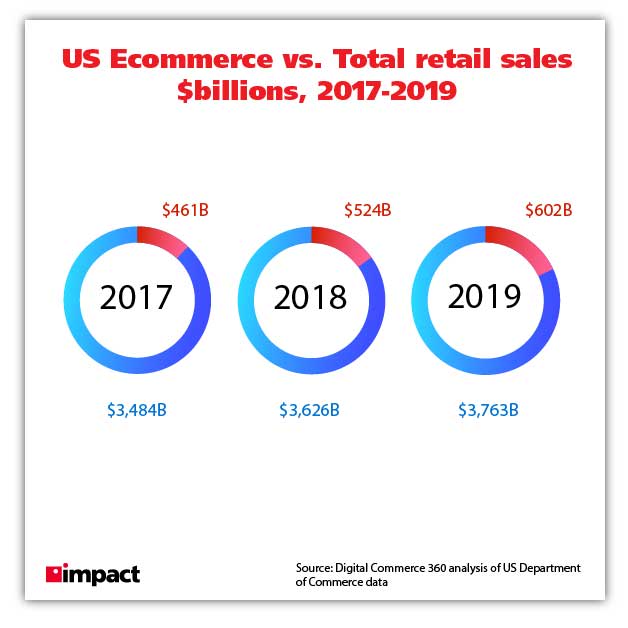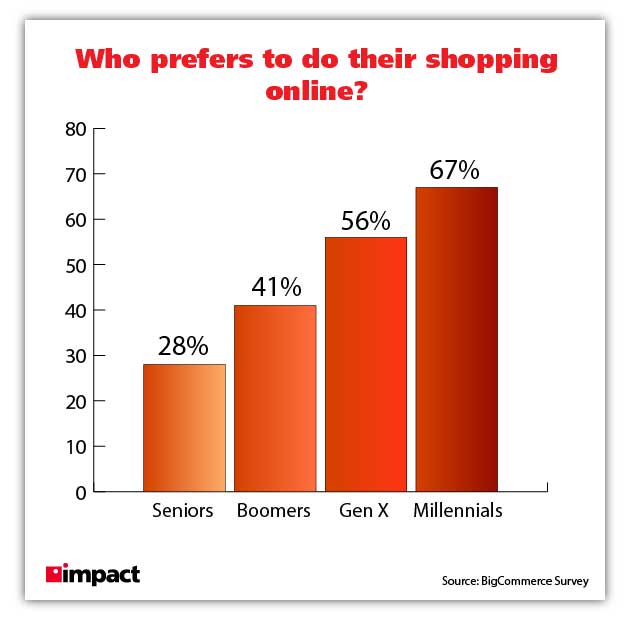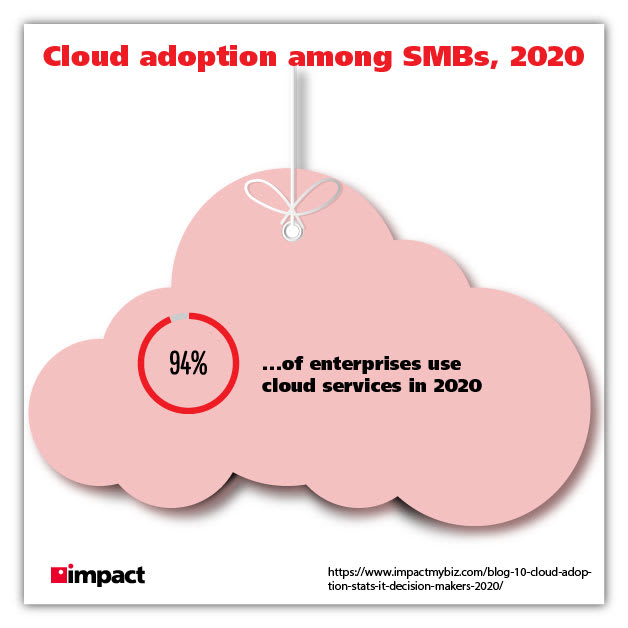Retail technology can provide a huge boost to retailers in 2020.
As most are now aware, online shopping has changed the complexion of the retail industry.
E-commerce sales are rising, in no small part to large online retailers like Amazon.
While retail as a whole hasn’t seen a year with more than 4.9% growth in the 2010s, ecommerce sales have consistently been growing by over 14% in the last decade
Last year, online sales grew by 14.9%, compared with 3.8% for the industry as a whole.
This of course affects traditional brick and mortar stores the most, with people ditching shopping carts for online baskets.
Keeping Pace Using Retail Technology
The good news, however, is that traditional retail is far from dead—people just have an additional thirst for online shopping.
For SMBs, as ever, this means adapting.
People are still coming to your store, yes, but have you taken full advantage of how retail technology can give your business a boost?
Industries that are found to consistently lag behind others, like manufacturing, healthcare, and retail, often do so because they don’t invest in technology.
In order to remain competitive, retail businesses, much like businesses in other sectors, must take advantage of the technology available to them in order to tap into markets they haven’t been able to target before.
Today, we’ll be taking a look at how retailers can utilize technology to help grow their businesses in 2020.
1. Speed
Today’s shoppers are more impatient than ever.
People are no longer content to wait more than a couple of days to get their products.
53% of consumers surveyed in a study said they have abandoned purchases because they weren’t offered quick enough delivery times
A remarkable 99% of US consumers say that fast delivery is important to them when making a purchase online.
Put simply, if you have a presence online but you aren’t offering expedited delivery, there’s a strong chance that you’re missing out on a whole lot of sales.
Additionally, consider offering an online payment/pick up in-store option for customers to give yourself even more flexibility.
2. Digital Payment Options
People don’t like lines—that’s one of the reasons online shopping is increasing in popularity in the first place.
Consumers want the most convenient shopping experience that can be offered.
They don’t want to wait around and don’t have a high tolerance for it.
Implementing omnichannel payment options is a huge advantage in widening the number of options available to your customers.
Mobile point-of-service payments have grown by 154.9% since 2017. By 2023, that figure will be 442.4%
Look no further than Amazon Go, which offers consumers the convenience of not needing to go to a checkout at all to buy what’s in their cart.
They scan their phone when they enter, and the store does the rest of the work for them, tallying up their goods and automatically charging them when they leave.
“Americans are spending more with digital payments and credit cards than ever, as convenience and technology have relegated cash and checks more to the periphery”
We’re not saying you have to reach this level of digitization, but it’s certainly an indication of where retail is headed, and how important multiple ways of payment will be in this decade.
3. Create Communities
Building relationships with consumers and potential consumers is huge for retailers in 2020.
But your communities should not be limited to the four walls of your store.
Instead, build dedicated pages on social media, engage with your customers. Encourage them in-store to sign-up or check out your Instagram page.
62% of consumers cite brand trust as an important factor in their purchasing decisions
Of course, this is easier for some industries than others, but the point remains: positive word-of-mouth is priceless for an SMB retailer.
By creating an online space for your customers, you’re giving them a dedicated place for them to get the answers they need and for you to build a brand.
When all is said and done, consumers will be more satisfied and you’ll give them a reason to come back.
4. Data Analytics
For any business, information on their customers’ needs is one of the most crucially important aspects of running a business.
How else are you supposed to know what to provide them?
Data can be used to see inefficiencies, new streams of revenue, what works and what doesn’t.
Analytics adoption is low among SMBs, but Oracle estimates that 27% of SMBs are planning to add business intelligence and analytics apps to their companies this year
If you aren’t using a CRM to its fullest capabilities, then you’re almost certainly missing out.
A CRM keeps all your data in one place so you can track everything you need and get a full bird’s-eye view.
Use a data visualization tool (like Microsoft Power BI) and all of the data that passes through your business can be presented in a simple and easy-to-understand way.
SMBs are adopting cloud services more than they’ve ever done, often for simple processes like Office 365 or their email server.
Now it’s about utilizing that power around data analytics and being able to leverage that to make effective business decisions.
5. Digital Marketing
Ignoring digital marketing as part of your retail technology is a huge mistake for any brick and mortar store, regardless of size.
Consider incorporating some tried and trusted methods of marketing into your efforts, such as:
Email marketing
Direct and to people with whom you already have a relationship, consumers check their emails every day, giving you another opportunity to build trust.
However, avoid coming across “spammy”, sending too many emails to people will have the opposite effect.
Social media marketing
This is highly effective and very affordable for even the smallest businesses.
One of the first things many consumers will do will be to check for a social media presence the store has.
Make sure you’re on top of your presence and you can provide potential customers will the information they need, and use paid campaigns to get your name out even more.
Search Engine Optimization
Many businesses today live and die by how well they appear on Google.
If a potential customer searches online for a business in your industry and your competitors are appearing before you, there’s a good chance they’ll go there first.
Consider making sure your website is performing to its maximum capabilities and have a marketing professional assess your SEO.
Impact Networking has been helping small and midsize organizations achieve their business goals for over 20 years. Having gone through many successful digitizing projects ourselves, we believe we are the best-placed organization in the country to help SMBs. Take a look at our approach to digital initiatives and how our digital transformation services can help you.



